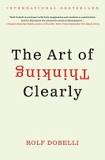For Kazoos and Blog Marketing, Don’t Blow – Hum!
 Want to pick up the kazoo? Start with Rule No. 1, advises Barbara Stewart, a classical musician who took the humble instrument all the way to Carnegie Hall. What is Rule #1? Hum, don’t blow.
Want to pick up the kazoo? Start with Rule No. 1, advises Barbara Stewart, a classical musician who took the humble instrument all the way to Carnegie Hall. What is Rule #1? Hum, don’t blow.
Always on the hunt for interesting trivia to use as business blog content writing fodder, I was fascinated to learn that the first documented invention of the kazoo was in 1883, but it was not until 1902 that the version we know today was patented by George D. Smith. One of the original kazoo factories is still in business today in Eden, New York.
Barbara Stewart was an anomaly among serious musicians; the kazoo had lost popularity among professionals, who recognized its serious limitations (although the Beatles and Jimi Hendrix each used it in certain of their songs).
Point is, there’s a lot of similarity – and symbolism – in the kazoo for us business blog content creators.
1. Blogs are not “serious literature”.
“It’s important to distinguish between creating multimedia content and writing in a pure literary sense,” Timothy Bowers tells authors who use blogs to promote their books. “A writer’s blog should deliver the text, and as little else as possible,” is his advice. Strategies and techniques used by other bloggers (hyperlinks, images, embedded videos) do not fall under the category of writing in a pure literary sense, he adds.
2. Like Kazoos, whose musical range is limited, blog posts are, by definition, short pieces, which limits the quality of character and theme development possible in longer works.
While the Internet marketing mantra proposed by digitalmarker.com, “Every piece of content should be as long as it takes to convey the message, and no longer” may be applied to writing of every ilk, blog posts, unlike, say novels, are best when focused on a single message or theme. Novels in contrast may effectively and purposefully meander into character development and even philosophical musing. What each blog post does is focus on just one aspect of your business, so that online searchers can feel at ease and not be distracted with all the other information you have to offer.
3. Blogs, like kazoos, should be hummed, not blown.
The secret of successful business blogging, I found, lies in not “blowing your own horn”, in other words coming on too strong. A blog is not an advertisement; you might say it’s an advertorial,. staying in “softly, softly” mode. As a content writer for a business or practice, you’re answering readers’ questions and “humming” solutions, not blowing them in readers’ faces!

 “There’s a unique recipe that goes into coming out ahead in just about anything,”
“There’s a unique recipe that goes into coming out ahead in just about anything,” 


Follow us online!